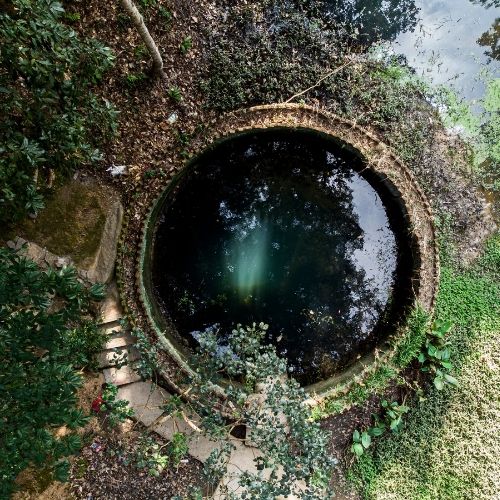“Kehrizler”: The Contribution to the World Civilization by Turks – Mehmet Öğütçü

After emerging from Central
Asia, Turks migrated extensively to all corners of the world, conquered new lands and blended with the civilizations they encountered. Nobody
denies the nomadic spirit of our ancestors, their constant urge to move, and
the fact that they were fierce warriors. If you look at our cities today, one can still say that we haven’t completely transitioned
to a settled way of life; the nomadic spirit still persists. Throughout history, the claim that Turks were
“barbaric, warrior-like, aggressive, plundering” holds some truth but
is not entirely accurate. It contains injustices. The positive aspects, such as
laying the groundwork for significant civilizations when they were settled,
bringing their traditions, cuisine, architecture, governance skills, and values
to the places they went, are often overlooked in such assessments.
Who built these channels?
If you’re looking for
evidence of how advanced ancient Turks were, you only need to look at the Karez
(or Kehriz) Channels, which have stood the test of time and are still in use
today. Dating back to 200 BC, these channels, which brought water from melting snow
in the Tian Shan Mountains to the Turpan region, are considered as an engineering marvel even by today’s standards. Built underground to prevent water evaporation during
the 6,000-kilometer journey from the Tian Shan Mountains to Turpan, these
channels were a testament to superb engineering skills.
Visiting Turpan in 1989 as
a Turkish diplomat, I was taken to the endpoint of one of these channels near
the city, resembling a lush oasis in the middle of the desert, which left a
lasting impression on me. Constructed by Uyghur
Turks, these channels are not only one of Central Asia’s but also one of the
world’s oldest underground water supply systems.
“Keriz” and Sumerian Mathematicians
The term “Karez/Kehriz,” like you noticed, caught my attention too. Yes, you’re
right; it carries the same meaning as “keriz” used in Anatolia today,
which refers to a public fountain. These remarkable
structures, certified as the world’s second civilization, carry 858 cubic
meters of water daily, ranking second in length only after the Great Wall of
China.
They were designed based on magnificent calculations, utilized advanced mathematics, physics, and engineering skills
to determine the slope, angle, flow rate of water to ensure the water’s correct path.
These channels prove us that the craftsmen lived in the Turpan region had the mathematical knowledge
of the Sumerian era.
There are over 1000 Karez
channels of different lengths in the Turpan region. Each channel consists of
vertical wells, underground and surface channels, and reservoirs. During
construction, vertical wells were dug at intervals of 20 to 30 meters to allow
workers to breathe and drain the excavated soil and mud. The reservoirs in the
channels serve as water tanks regulating the water quantity. Starting at a depth of 110 meters, wells were dug at intervals to irrigate agricultural areas.
These wells range from 90 to 10 meters deep in Turpan. All these channels
operate solely on the force of gravity, lifting water to the surface without
the need for pumps.
Still in Use
Converted into museums
today, these channels continue to function seamlessly, transporting water and
serving as a lifeline for the Turpan region. Alongside the Great Wall of China
and the Beijing-Hangzhou Grand Canal, Chinese proudly present the channels to the outside world as one of Ancient China’s great
architectural wonders.
These channels stand as a
good example of how Turks, in their historical homeland, were able to create civilizational
artifacts. The techniques used in their construction represent vivid examples
of a highly organized civilization with advanced knowledge. Unfortunately, channels of the same quality, design,
and sophistication cannot be replicated today. Showcasing examples like the
Karez channels that highlight Turks’ contribution to world civilization should
be our obligation, both to our own people and to the international community.

Mehmet Öğütçü
Chairman, Global Resources Partners, UK, and The London Energy Club. Former diplomat, prime minister adviser, IEA and OECD senior executive, director and independent board member at British Gas, Genel Energy, Invensys, Şişecam, Yaşar Holding companies. Chairman of the Middle East Institute, Washington DC, Advisory Board. He can be contacted at [email protected]
To cite this work: Mehmet Öğütçü, “Kehrizler: The Contribution to the World Civilization by Turks”, Panorama, Online, 22 April 2024,
Copyright@UIKPanorama All on-line and print rights reserved. Opinions expressed in works published by the Panorama belongs to the authors alone unless otherwise stated, and do not imply endorsement by the IRCT, Global Academy, or the Editors/Editorial Board of Panorama.